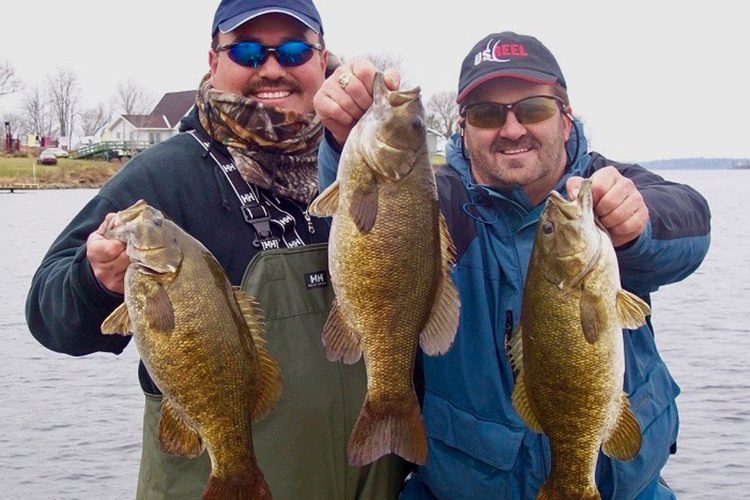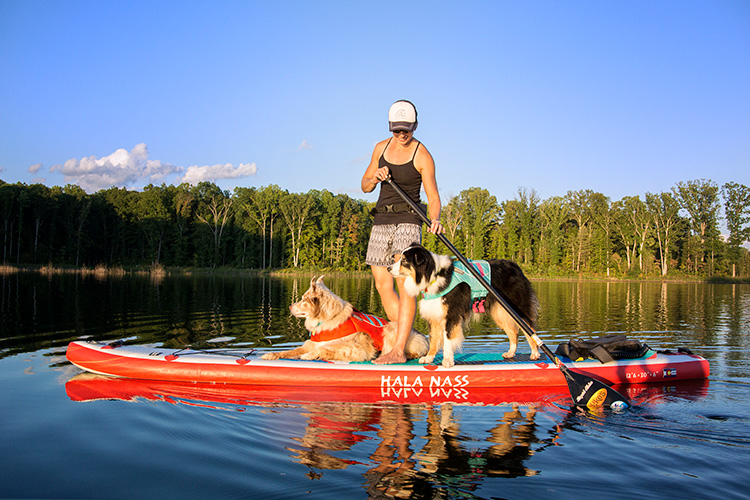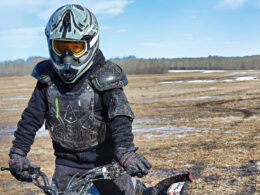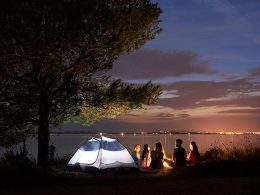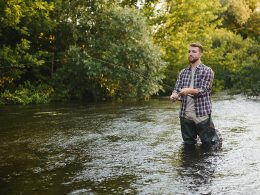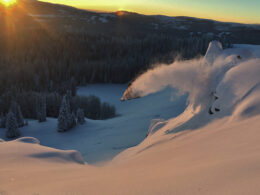Catching bass is never an easy proposition. As winter gradually morphs into early spring, however, it becomes less of a challenge. Dynamic changes that favor fishermen begin when the length of daylight increases and the water temperature rises. Depending on latitude, bass are at some stage of their spring migration, headed shoreward in fits and starts as the instinctive need to feed prior to spawning kicks in and the water warms into the mid-to-high 40s.
When spawning season approaches, experienced anglers know they can ignore most deep offshore waters and instead concentrate on manmade and natural shoreline cover, and structure such as points, flooded feeder creeks and river backwaters. How anglers fish, and the techniques they employ, are at least as important as the lures they use. Here’s a primer on how to locate and catch bass before the spawn sets up.
Hungry bass are on the move at this time of the year. The angler’s task is to focus on places where the fish are temporarily holding or passing through. In the pre-spawn phase, bass don’t swim from deeper water to the shallows in a straight line or all at once; rather, they migrate along well-defined underwater trails. A GPS unit or lake map provides quick reference to where such features can be located.
What To Look For: A travel route might be as obvious as a flooded roadbed or a narrow neck or stretch of creek that leads to a broad spawning flat. Sharp bends or spots where there is cover such as stumps, laydowns or brush piles should be fished slowly and thoroughly. Humps and rocks on an otherwise flat bottom, or places where rocky bluff banks gradually merge with clay or gravel banks, are prime areas.
How To Fish Them: When tapping a flooded ditch or creek, position the boat in the center of the feature if possible and cast along either side and down the middle of the feature. Probe every side of a hump, ledge or structure change before moving. Start with “search baits” that are cast out and reeled back with a steady retrieve, and then slow down and switch to other lures as necessary.
Likely Lures: Jigs rigged with boot-tail grubs, buzzbaits, lipless crankbaits, vibrating jigs, football-head jigs, or suspending jerkbaits are good choices here. Wacky-rigged stick worms such as the Yamamoto Senko or Strike King Ocho might work, too.
A typical wacky rig consists of a stick worm or regular plastic worm hooked through the middle of its length with a wide-gap hook (2/0 or larger, depending on the diameter of the soft-plastic) or jighead so that it dangles and moves enticingly as it sinks. Anglers sometimes add nail weights to either or both ends to make the bait descend quicker in deeper water. Wacky rigs don’t make good search baits because their effectiveness depends on a slow presentation. Once cast, a wacky rig sinks on a slack line, then is lifted a foot or so and allowed to settle again as slack is taken up.
Tackle You’ll Need: Medium-action spinning rods of 7 to 7 ½ feet long and 6- to 12-pound-test fluorocarbon or braided line on the matching reel is preferred for lightweight presentations such as a weightless wacky rig. For other baits, baitcasting or spinning tackle capable of making long casts will work.
A Closer Look: Here are some additional fishing tips for spring bass.
Bass are captivated – at least temporarily – by underwater points or similar bottom changes that differ from the norm.
What To Look For: In early spring, fish will begin to congregate at the deepest end of a main-lake or secondary point and then move shallower into coves as the season progresses. If there are stumps or manmade cover at the end of such points, even better.
How To Fish Them: If possible, start at the offshore end of a point and cover both sides within casting distance. Then alternately fish each side. If the wind is a factor, position the boat to cast upwind or quartering upwind. Fish secondary points in known spawning coves and feeders.
Likely Lures: Umbrella rigs are tops here, backed up by crankbaits, hard suspending jerkbaits, such as the Lucky Craft Flash Pointer 100, soft-plastic jerkbaits, such as the Zoom Fluke, and spinnerbaits.
Tackle You’ll Need: Conventional baitcasting or spinning gear will work. Two-handed rods that afford long casts are best. If you’ll be slinging an umbrella rig, fish it on a 7 1/2- or 8-foot medium-heavy to heavy baitcasting outfit and 60- to 100-pound-test braided line or 20-pound-test fluorocarbon.
A Closer Look: Check out this video on how to rig and fish an umbrella rig.
Quick Tip: Quiet, please. In the late pre-spawn phase, bass are jittery and easily spooked as they move shoreward. Correspondingly, the shallower and clearer the water, the stealthier an angler’s approach must be. Present lures with the pitching technique or sidearm roll cast.
Use the trolling motor sparingly, preferably only to make course corrections or bypass stretches. Be as still as possible. If the boat is equipped with a mechanical anchor and the water is shallow enough to use it, stop occasionally in one place and repeatedly make long casts to the area ahead before changing positions.
Most of the year, a boat dock might as well have a sign posted on it that proclaims “Fish Here.” Docks are among the best four-season fish attractors in any lake.
What To Look For: The most productive docks – either floating or fixed – in the pre-spawn phase are constructed over or near deep water in the 10- to 20-foot range or deeper. They have distinctive structure features under them such as brush piles, channel swings, drop-offs or rocky bottoms.
How To Fish Them: The most successful dock anglers are those skilled at skipping or pitching a bait into the dark cubbyholes underneath. However, pre-spawn bass don’t necessarily hold in hard-to-reach spots under a dock as is likely in summer. Instead, the fish often move from dock to dock or patrol nearby waters.
Skipping a lure underneath fixed docks can pose more problems for anglers this time of year, as flooding in the early spring often reduces the target area. Better to focus on areas of a lake where floating docks are the norm. In any event, stay a long cast away from the targeted dock. Position the boat to cast parallel to the end of the dock, then set up to cast down either side. Thoroughly fish the dock from about 5 feet deep down to the bottom with appropriate lures before moving on.
Likely Lures: Suspending hard jerkbaits, crankbaits, wacky rigs, swim jigs, boot-tail soft-plastic swimbaits, umbrella rigs and soft jerkbaits are all popular choices.
Tackle You’ll Need: Baitcasting or spinning tackle will work, but some reels are considered better than others for the skipping because of their resistance to backlashing. Baitcasting reels with higher gear ratios such as the 6.3: 1 Daiwa Tatula SV and rods in the 6 ½- to 7-foot range with medium to medium-heavy actions are preferred.
A Closer Look: Here are some of the top lures used by the pros in in colder waters for bass.
In rivers or lakes where current is present, bridge pilings and current breaks, such as barges and wing dams, are bass magnets. In manmade lakes, bass tend to congregate below dams and feed until the rising water temperature signals that it’s time to move into bedding areas. These river bass feed in the main flow, but they also wait in eddies and other slack-current edges for their forage to come along.
How To Fish Them: Position the boat to cast upstream or quartering upstream at the target, which might be a bridge piling, barge tie-up, sunken barge, jagged bluff bank or any current break. Fish riprapped banks below dams as well, especially where turns in the bank, creek mouths or shoreline obstructions create eddy pockets.
Likely Lures: Umbrella rigs with boot-tail swimbaits, deep-diving crankbaits, lipless crankbaits, football-head jigs and underspin jigheads such as the Blakemore Randy’s Swim-N-Runner with or without a soft-plastic swimbait trailer. Natural shad finishes are usually best when swimming lures are the choice.
Tackle You’ll Need: Two-handed conventional baitcasting or spinning tackle capable of making long casts works here.
A Closer Look: Check out this video for everything you need to know about fishing with underspins.
Related articles that may interest you:
Best Tips for Catching Spring Bass Right Now!
How to Catch More Winter Bass and Walleyes Right Now!
10 Best Bass Waters Off the Beaten Path

